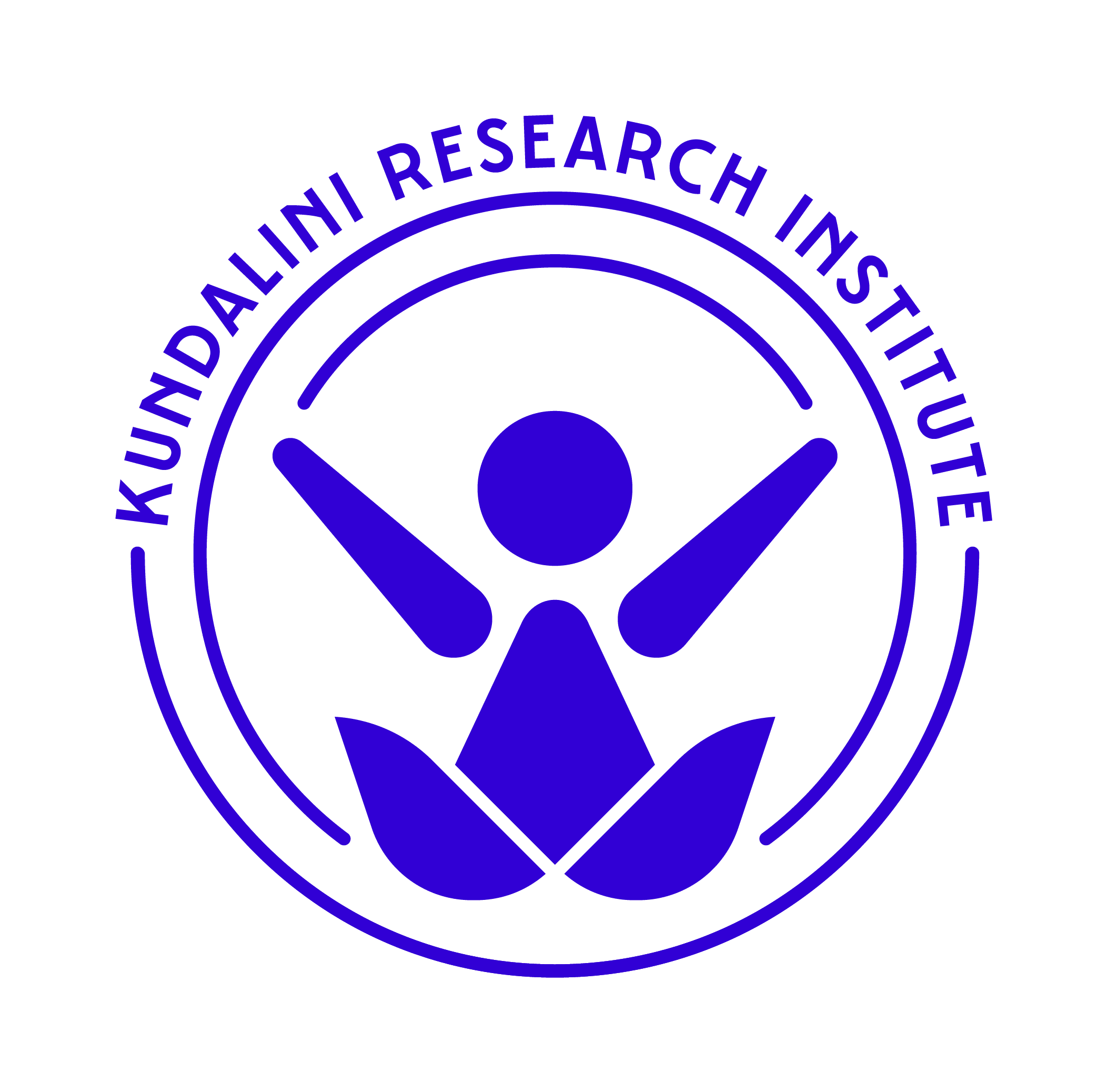By Nikhil Ramburn and Sat Bir Singh Khalsa, Ph.D.

The experience of anxiety, as clinically defined, is a feeling of dread and/or worry that may also be associated with continuing rumination and physical symptoms of the stress response such as rapid heartbeat, perspiration, and muscle tension. When this becomes persistent and heightened in intensity it may begin to meet the criterion of one of the anxiety disorders. Symptoms in anxiety disorders may manifest as panic attacks, feeling overwhelmed and uneasy in social situations, and a variety of possible phobias about specific places or future events. Anxiety is clinically significant if a patient suffers from anxiety symptoms for at least 6 months in any given year, as is the case for 6.8 million adults in the U.S. who suffer from one of the more common forms known as generalized anxiety disorder (GAD). Patients with GAD have persistent and excessive worry about a range of different things such as money, health, family, or anticipated disaster when there is no apparent reason for concern. Individuals find it difficult to control their worry. This may be related to past emotional traumas leading to an enlarged and overactive brain region called the amygdala, responsible for emotion and the stress response. When the over-sensitive amygdala is excessively activated, the basal ganglion region of the brain along with the frontal lobe, which are normally responsible for self-regulation, are unable to put the brakes on the amygdala. It is believed that a combination of biological and social factors, particularly stressful life events, play a role in the development of GAD.
Although pharmacotherapy is available for GAD patients, many patients remain untreated or are medicated but would prefer alternatives to pharmacotherapy. Prescription drugs that treat anxiety may only be effective at treating the physical symptoms and often carry a high risk for addiction and may severely impair mood, judgment, and cognition. Fortunately, for those patients with the knowledge and access to it, there is a credible behavioral alternative. Cognitive behavioral therapy (CBT) addresses negative thought patterns and cognitive distortions in the way we look at the world and ourselves. The efficacy of CBT for anxiety disorders has strong support from a good body of clinical research trial literature including meta analytic review studies.
A growing body of evidence suggests that contemplative practices such as yoga and meditation may also be effective at treating GAD. Indeed, yoga and meditation, through engaging the activity of the attention networks in the frontal lobe, is a form of self-regulation that can inhibit and regulate activity in brain areas, including the amygdala, that are associated with fear and stress-responses. This regulation thereby decreases emotional intensity and perceived stress levels and improves ability to manage everyday stressors and emotional reactions. During mindfulness meditation practices, such as Mindfulness Based Stress Reduction (MBSR), individuals become less reactive to unpleasant feelings and more reflective, which then leads to positive psychological outcomes. When researchers recently evaluated randomized controlled trials (RCTs) of MBSR interventions, they found that the practice is moderately to largely effective at reducing anxiety and depression symptom severity among individuals with a range of psychiatric conditions. The most comprehensive review to date examined the effects of 209 trials of mind body interventions (MBIs) which included 12,145 patients and found MBIs to be more effective in reducing psychological and medical symptom severity than a number of control conditions.
Yoga is one of the MBIs that may offer some advantages to the benefits conferred by meditation alone. Indeed, physical yoga exercises and breathing practices may induce the positive changes in brain neurochemistry that is linked to a more positive mood and affect. Specifically, yoga has been found to increase thalamic GABA levels (a brain neurotransmitter), in a similar fashion to pharmacologic agents acting on GABA levels to alleviate anxiety. Pranayama or yogic breathing may also contribute to the shift towards a dominance of the parasympathetic nervous system (associated with relaxation). Indeed, a recent meta-analysis of eight RCTs of yoga interventions with 319 participants revealed evidence for small, short-term benefits of yoga on anxiety compared to controls. However, in that review, there were no effects found for anxiety disorders that were formally diagnosed. The researchers concluded that “yoga might be an effective and safe intervention for individuals with elevated levels of anxiety” but that “there was inconclusive evidence for effects of yoga in anxiety disorders”.
A preliminary clinical evaluation of yoga for GAD was conducted at the outpatient center of Riverside Community Care in the Boston area, in collaboration with Boston University and Harvard Medical School researchers. The results were published in a 2015 paper in the journal Clinical Psychology and Psychotherapy. Thirty-two treatment-resistant GAD patients participated in an intervention (Y-CBT) consisting of CBT enriched with Kundalini Yoga as taught by Yogi Bhajan®, a yoga style which is adaptable for therapeutic populations (the Guru Ram Das Center for Medicine and Humanology specializes in such applications). The classes in this study included 30 minutes of yoga, meditation, breathing practices (especially long, slow abdominal breathing), and deep relaxation practices. The participants’ post-intervention scores showed statistically significant improvements in anxiety, depression, panic, sleep, and quality of life. The study’s lead author, psychologist Manjit Kaur Khalsa and her colleague Dr. Greiner-Ferris, have recently published a book, The Yoga-CBT Workbook for Anxiety, detailing their strategy to reduce anxiety with a step-by-step six-week program of yoga, meditation, and CBT strategies. The results from this preliminary study suggest that Y-CBT may have potential as a promising treatment for those suffering from GAD.
Another more recent publication of a Kundalini Yoga-based study for GAD is currently in press in the International Journal of Yoga Therapy. In that study, forty-nine female participants meeting the DSM-IV criteria for GAD were recruited from the community near the Sundari Satnam Kundalini Yoga Center in Grafton, VT. Both Boston University and Harvard Medical School researchers were part of the study team. The subjects were randomized to either an 8-week Kundalini Yoga intervention or a group receiving treatment as usual. The experimental subjects met for 8 consecutive weeks for 1.25 hours in a group format and received intensive training in Kundalini Yoga kriyas incorporating yoga postures, breathing, mantra, meditation, and relaxation. Results revealed that the participants of the yoga group had lower levels of anxiety relative to control subjects and had a decrease in somatic symptoms. These new findings further support the potential role for the use of Kundalini Yoga as a therapy, in this case for patients with a formal diagnosis of GAD.
In summary, there is encouraging preliminary evidence suggesting efficacy of yoga for treating GAD patients, particularly for Kundalini Yoga as taught by Yogi Bhajan. However, much research remains to be done and so there is still insufficient evidence to make definitive recommendations about yoga therapy for this condition. More high-quality studies are warranted with larger sample sizes, and the mechanism of action for yoga’s therapeutic benefits in GAD patients needs further investigation. In fact, a ground-breaking NIH-funded, 5-year, multi-site trial that will be concluding soon, is evaluating the efficacy of Kundalini Yoga for GAD as compared to CBT and a psychological attention control condition (see the article: Yoga for Generalized Anxiety Disorder: Design of a Randomized Controlled Clinical Trial. The sample consists of 230 individuals with a primary DSM-5 diagnosis of GAD, 95 of which are receiving a manualized Kundalini Yoga group intervention delivered by local certified Kundalini Yoga instructors supervised by Dr. Sat Bir Khalsa, one of the co-investigators.
Stay tuned for future results of this work.

Nikhil Rayburn grew up practicing yoga under mango trees in the tropics. He is a certified Kundalini Yoga teacher and has taught yoga to children and adults in Vermont, New Mexico, Connecticut, India, France, and Mauritius. He is a regular contributor to the Kundalini Research Institute newsletter and explores current yoga research.

Sat Bir Singh Khalsa, Ph.D. is the KRI Director of Research, Research Director for the Kripalu Center for Yoga & Health, and Assistant Professor of Medicine at Harvard Medical School. He has practiced a Kundalini Yoga lifestyle since 1973 and is a KRI certified Kundalini Yoga instructor. He has conducted research on yoga for insomnia, stress, anxiety disorders, and yoga in public schools. He is editor in chief of the International Journal of Yoga Therapy and The Principles and Practice of Yoga in Health Care and author of the Harvard Medical School ebook Your Brain on Yoga.
Teacher

KRI is a non-profit organization that holds the teachings of Yogi Bhajan and provides accessible and relevant resources to teachers and students of Kundalini Yoga.


 Français
Français Deutsch
Deutsch Italiano
Italiano Português
Português Español
Español 简体中文
简体中文
More Related Blogs